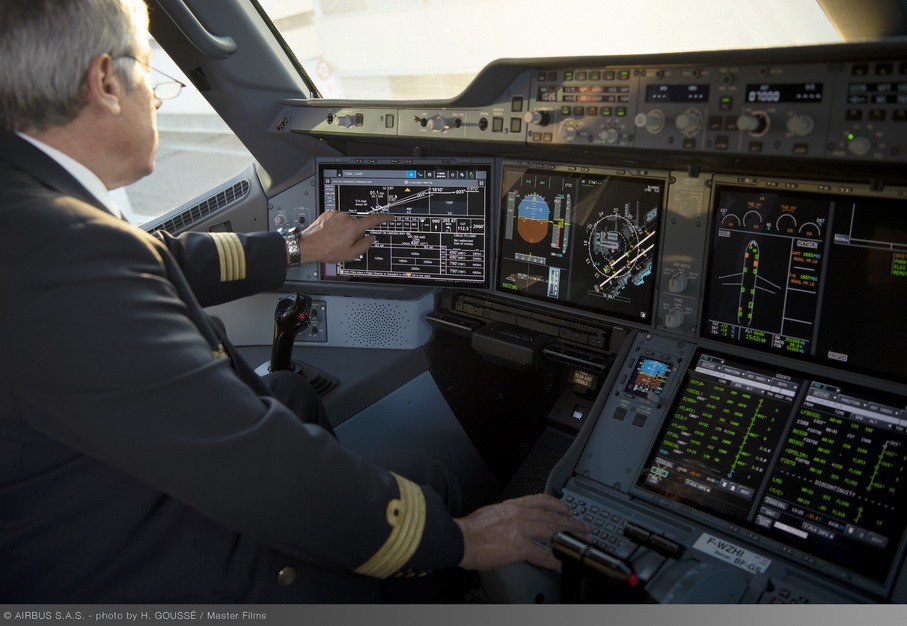The push by some airlines and regulators for a one-pilot large aircraft is ridiculous as passengers and pilots themselves will never agree.
A one-pilot small aircraft with a handful of passengers is one thing but one pilot in charge of a 500-passenger jet – not a chance.
Subscribe to the Airlineratings.com newsletter to get the relevant news first
Video of stunning supersonic flyovers
Ryanair 737 Incredibly Wobbly Landing
Spectacular Emirates A380 and Red Arrows Flyby
According to Bloomberg over 40 countries including Germany, the UK and New Zealand have asked the United Nations body that sets aviation standards to help make single-pilot flights a safe reality. It reports that the European Aviation Safety Agency (EASA) has also been working with manufacturers to determine how solo flights would operate and preparing rules to oversee them. An entry date could be as early as 2027.
Bloomberg quotes Tony Lucas, an Airbus A330 captain for Qantas and president of the Australian & International Pilots Association, as being concerned that a lone pilot might be overwhelmed by an emergency before anyone else has time to reach the cockpit to help.
“The people going down this route aren’t the people who fly jets every day,” Lucas said. “When things go awry, they go awry fairly quickly,” Lucas told Bloomberg.
And Lucas is absolutely right. There are just so many scenarios where two pilots are critical to the safe operation of a large commercial jet in crowded airspace in worsening weather, thanks to climate change.
Two senior captains known to me retired early because they were sick of the congestion over Europe and the North Atlantic. And both also cited lousy weather as an increasing challenge.
And what about a critical health issue on take-off or landing? Can’t happen? Well, it happened to me. On touchdown in Perth, Australia, the flying captain under type training on a 787, had a seizure and collapsed and only the lightning-fast reaction of the other captain saved the aircraft.
Captain Lucas, a check and training captain, also expressed concern about the lost opportunities to mentor junior pilots if flight crew are working increasingly on their own. Janet Northcote, EASA’s head of communications, wrote in an email to Bloomberg that “we are potentially removing the last piece of human redundancy from the flight deck.”
At a Bloomberg business summit in Bangkok last week, Boeing’s Southeast Asia President Alexander Feldman said that the “psychological barriers are probably harder than the technological barriers. The technology is there for single pilots, it’s really about where the regulators and the general public feel comfortable.” The answer to that question from the public’s point of view is almost certainly never.
The International Federation of Air Line Pilots’ Associations told ICAO in a paper for its assembly last month that nothing to date has proved safer than “a second rested, qualified, well-trained pilot physically present on the flight deck.”
Joe Leader, chief executive officer of Apex, a New York-based aviation association focused on passengers’ experiences told Bloomberg that “commercial airline passengers absolutely expect and deserve two pilots in the cockpit.”
There is no doubt in this writer’s mind that this is a bad idea. The challenges today for pilots with more crowded airspace and worsened weather make a two-pilot crew a non-negotiable baseline. The savings are just not worth it as flying – notwithstanding the current short-term high costs due to the post-pandemic world – has never been cheaper.
Yes, we have a pilot shortage and that can be fixed by paying them more. Over the last 30 years with the explosion of low-cost airlines, the wages and conditions for pilots have plummeted at too many airlines and that race to the bottom must stop.
The writer is the author of 11-books on the industry and the winner of 44 national and international awards for his work.
























